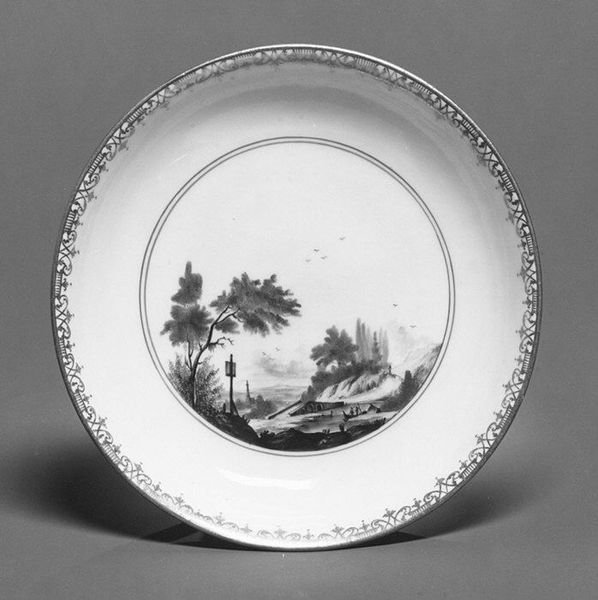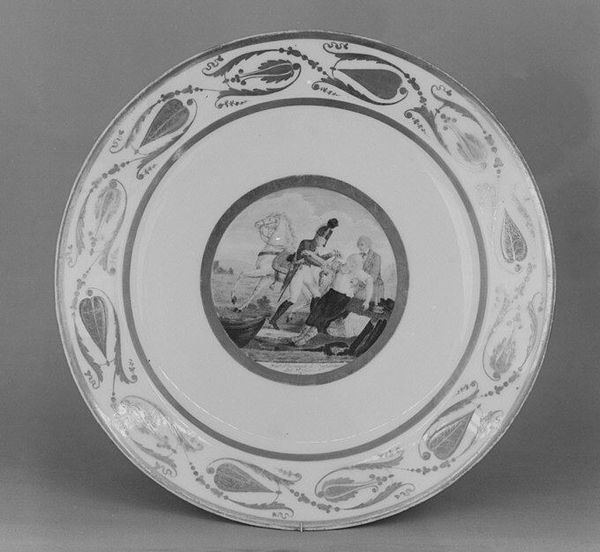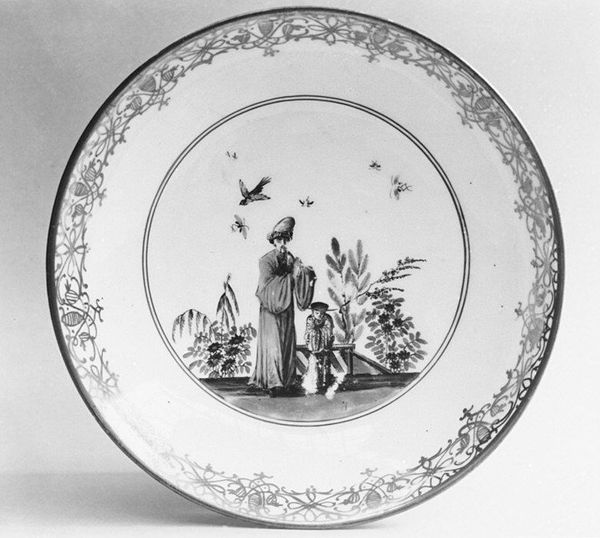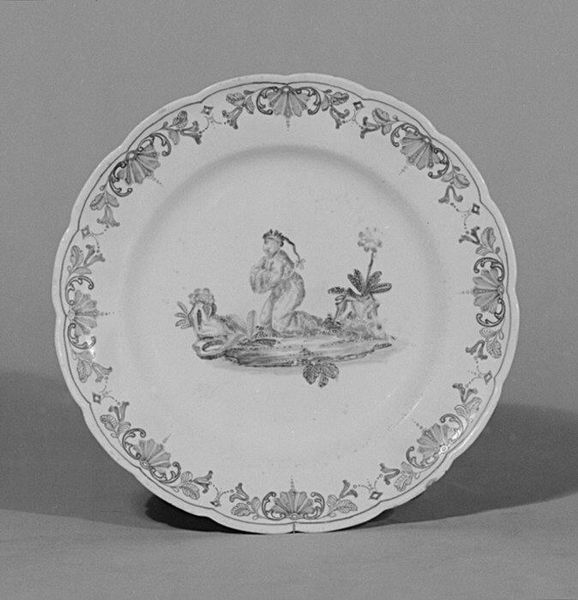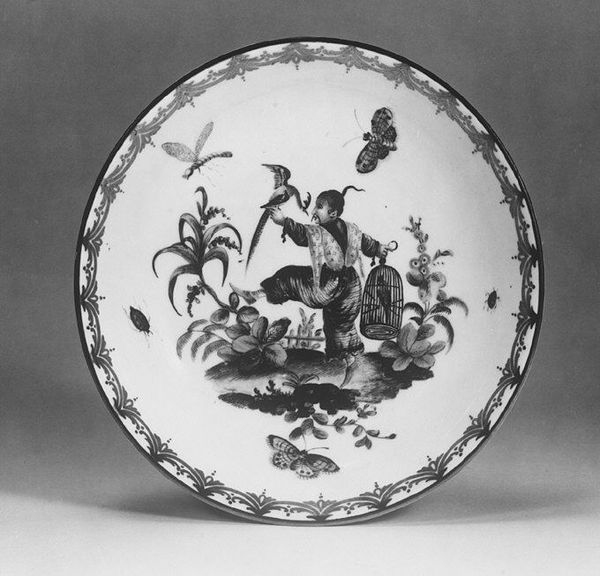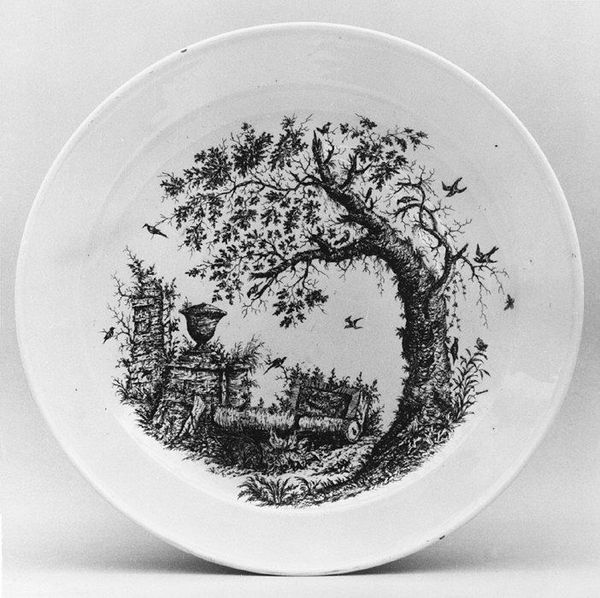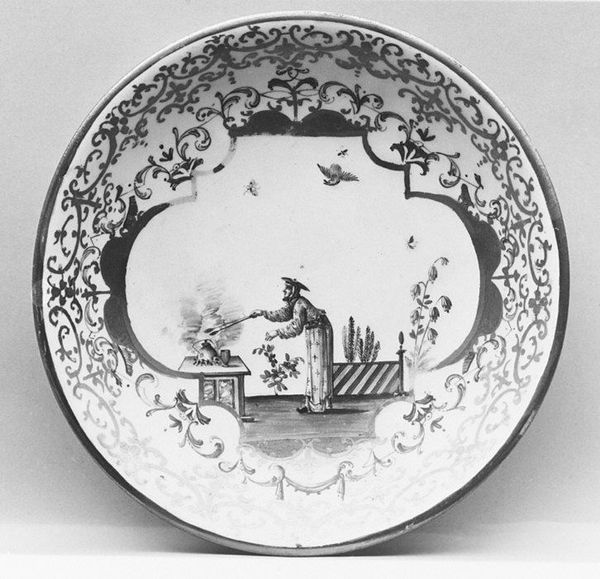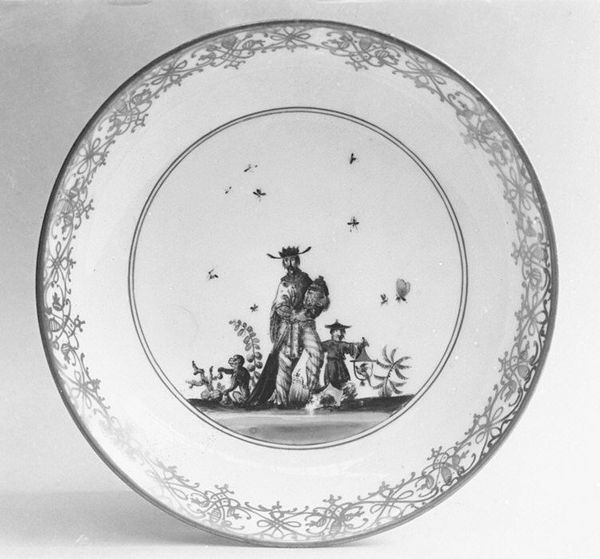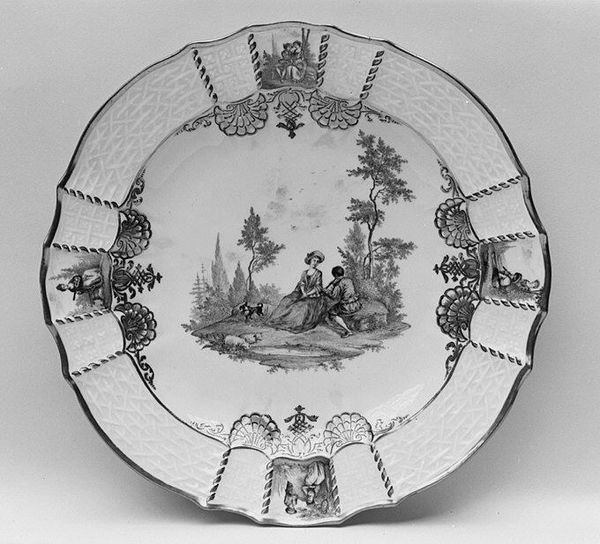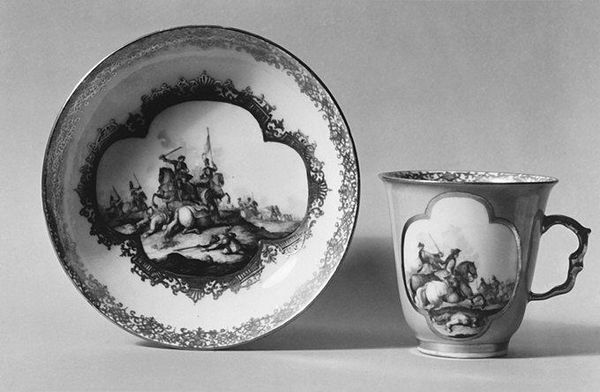
tempera, painting, ceramic, porcelain
#
tempera
#
painting
#
landscape
#
ceramic
#
porcelain
#
decorative-art
#
miniature
Dimensions: Diameter: 5 3/16 in. (13.2 cm)
Copyright: Public Domain
Curator: Here we have an 18th-century saucer, crafted at the esteemed Meissen Manufactory. The delicate porcelain provides a canvas for a miniature landscape, painted in tempera. It’s currently housed at the Metropolitan Museum of Art. Editor: It's stark. The limited monochrome palette gives a distinctly wistful quality, doesn’t it? The circular format confines the scene almost like a framed memory. Curator: Indeed. Pieces such as this speak to the rise of porcelain as a marker of status and refined taste during the 18th century. These objects weren't merely functional; they were vehicles for expressing cultural sophistication. Editor: I’m immediately drawn to how the artist constructs depth using only subtle gradations of tone. Notice the bare tree mirroring the figures on the bridge? This composition creates a narrative within its strict pictorial space. Curator: Precisely! This relates to a broader enthusiasm for landscape painting among European aristocracy, now manifested on a smaller, more domestic scale. These picturesque motifs, like the bridge, represent ideals of beauty but also a command of nature. Editor: The scene itself, with figures and a simplified natural backdrop, almost feels theatrical. The bridge appears as a stage for observing life's simple movements. Curator: Exactly, these pieces were often commissioned for entire services meant to convey an elevated lifestyle. Imagine the dinner party conversations sparked by such detailed and artistic porcelain! Editor: Looking at the painted border—almost abstracted nature—it contrasts and complements the miniature within. It invites reflection not only on the craftsmanship but also on its intrinsic design choices. Curator: Its ubiquity in museums today often blinds us to its role as both aesthetic and propaganda, shaping cultural norms surrounding domesticity. Editor: Absolutely. Thinking purely in pictorial terms though, I appreciate the precision and care given to it, something we too easily overlook today. Curator: Ultimately, viewing an object like this offers us insight into the complex cultural landscape of 18th-century Europe and beyond. Editor: And aesthetically, in just this humble saucer, one glimpses an extraordinary world encapsulated within a circle.
Comments
No comments
Be the first to comment and join the conversation on the ultimate creative platform.
